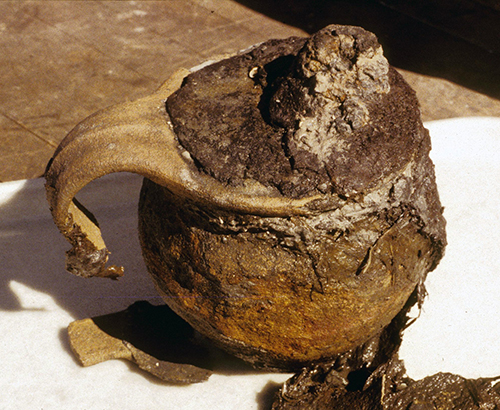
Object: Firepots, or pots-à-feu
Date: AD 1684
Context: La Belle shipwreck, Matagorda Bay, Gulf of Mexico

In 1684, explorer Robert Cavelier, Sieur de La Salle, departed France with four vessels on a voyage to the Gulf of Mexico. Commissioned by the King of France, Louis XIV, La Salle intended to establish a French colony near the mouth of the Mississippi River. La Salle’s expedition met with many disasters. One of his vessels was captured in the Caribbean, and after La Salle mistakenly landed at Matagorda Bay, in Spanish territory. His supply ship L’Aimable then wrecked at Pass Cavallo, the bay’s entrance, and a third vessel, Joly, returned to France after completing its mission. In 1686, La Salle’s final ship, La Belle, sank during a storm within the bay near Matagorda Peninsula, stranding La Salle and his settlers. After failed attempts to find the Mississippi River on foot and secure aid, La Salle was assassinated by his own men. The wreck of La Belle was rediscovered in 1995 by the Texas Historical Commission and excavated by the agency from 1996–1997.
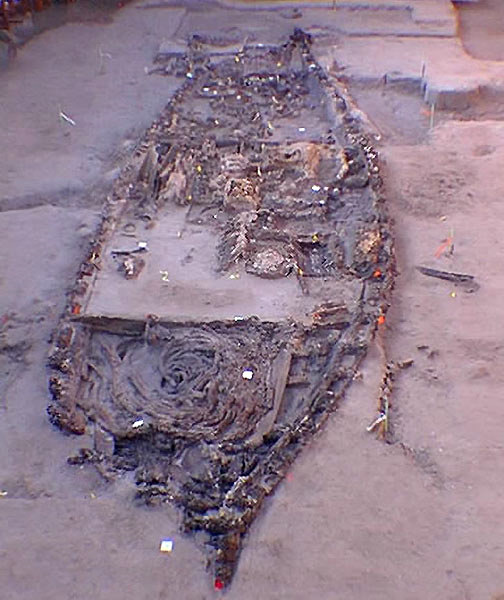
Deep inside La Belle, the leaders of the La Salle expedition had concealed a deadly cargo. They packed nine grapefruit-sized ceramic pots in the ship’s stern, cradling them in packing material so that storms and the rigors of travel would not break them. They were not carefully chosen or manufactured for consistency, as as demonstrated by their variations in size and form. Yet they were all the same in function, and at this they would have been brutally effective.
These ceramic pots are explosive grenades—firepots, or pots-à-feu. Built with an iron grenade nested inside a larger ceramic grenade, they are the only objects of their type ever recovered archeologically. And their story is complex and revealing. The firepots tell us that the La Salle expedition was not merely a voyage of pure discovery or exploration, or even of peaceful settlement; the leaders of the La Salle expedition were clearly prepared for a secondary military objective—a planned mission to seize silver mines from Spain. In preparation, La Salle’s fleet carried 100 soldiers and an assemblage of weapons. The firepots not only symbolize the unrealized military engagement, but they also paint a picture of the exact technological moment La Belle occupied, a transition point between ceramic and iron grenades.
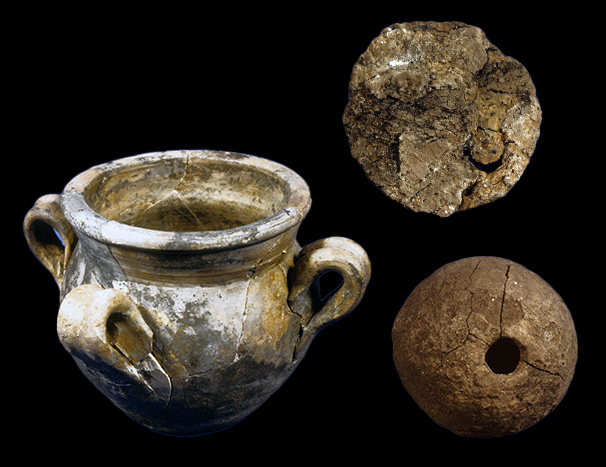
La Belle’s nine firepots vary in detail, but they share the same rough form. They are widemouthed ceramic pots sealed with a cork stopper. Remnants of cloth remained tied around the mouth of a few of the firepots, covering the stopper. A tapered wooden fuse plug was placed in each stopper, with a hole in that plug for the slow-burning fuse or “match.” Archeologists found that all but one of the pots contained a hollow cast-iron grenade, nestled in a substance they believe to be gunpowder. The iron grenades inside the firepots were simple cast-iron hollow balls with a single hole. Some had fuse plugs like the ceramic pot, but others didn’t. They were slightly different in size, but all would have been filled with gunpowder like the powder they were surrounded by. The La Belle firepot dimensions range from 11 centimeters (cm) height by 9.7 cm diameter (smallest firepot) to a maximum size of 15.5 cm height by 16 cm diameter.
The pots had handles that varied in quantity and size, but the handles were likely unimportant. Some handles seem to have broken before the firepot was even assembled. Perhaps these vessels were repurposed, or perhaps they were manufacturer’s castoffs, chosen because their only purpose was to hold the explosive charge when thrown.

The firepots on La Belle are distinctly representative of their technological moment in history. Before the late 1600s, grenades were frequently made of ceramic or glass, filled with explosive or incendiary material, like La Belle’s firepots but without the inner iron grenade. After the late 1600s, grenades were typically metal, with no ceramic component. The 1680s were at the transitional point in grenade manufacturing, and the La Belle firepots reflect this perfectly—they combine earlier and later features of these explosive weapons. The presence of these composite ceramic and cast-iron explosives is unique in the archeological record.
The written historical record mirrors the archeological discovery of the La Belle firepots. Texts predating La Belle describe ceramic pots filled with powder, while later texts describe iron grenades. Two accounts describing firepots like those found on La Belle, a ceramic and iron grenade, date to 1650 and 1684, the year La Belle sailed from France.
Researchers examining the historical record and La Belle’s firepots were left with many questions. How, exactly, did the firepots work? Were they effective weapons? Does the composite design make a single- or two-part explosion? Because the historical record remains silent on this subject, the researchers took the firepot technology into their own hands.
Artists at Victoria College and Texas A&M University-Corpus Christi built copies of the ceramic and iron parts of the grenades. Assisted by the Corpus Christi Police Department, archeologists carefully combined the copies with stoppers, fuse, and gunpowder. Eleven replicas were made. While it would have been worthwhile and interesting to use replicas of seventeenth-century fuses, time, expense, and safety considerations required employing modern cannon fuses for the first experimental tests, and electronic push-button fuses for subsequent tests.

This sort of testing is extremely dangerous, as these weapons were designed to injure and kill. The Corpus Christi bomb squad and Nueces County fire department observed all the loading and testing procedures as safety was paramount. The tests occurred at the police department’s isolated bomb range to maximize safety and prevent injury. All the test personnel took cover behind a thick earthen berm and did not expose any part of their bodies to the explosions or flying debris. Safety glasses would not have saved the researchers, so the tests were watched by high-speed cameras instead of human eyes. These cameras were generously furnished and operated by their manufacturer, Vision Research. They allowed analysis that greatly exceeds anything that can be processed by eyes alone.
Along with the cameras, three other types of instruments helped researchers understand the firepots. Four human-shaped plywood “witnesses,” representing enemy soldiers, were positioned various distances from the firepots. They allowed researchers to evaluate how many ceramic or iron fragments might hit people at different distances. At the suggestion of the police department monitors, watermelons were used to simulate softer tissue. Two pressure gauges were placed at set distances from the explosions to document maximum pressure at each location.
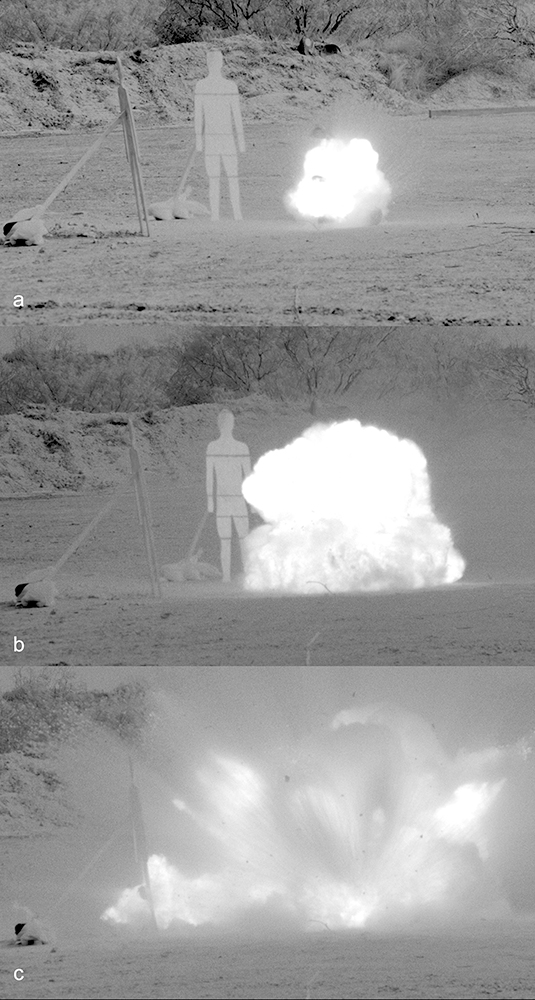
Each of the eleven explosive tests was carefully analyzed to examine the process of a firepot’s detonation. When the powder in the pot was ignited, the pot immediately started to break apart as the gunpowder released gas. Most of the time, the stopper and fabric were immediately launched out of the mouth of the pot. In just a few milliseconds after ignition (6-14 milliseconds depending on test) the pressure inside the iron grenade had risen to levels that “popped” the iron grenade like a balloon.
The iron grenade’s bursting created a supersonic pressure wave that quickly traveled out from the grenade. By the time the grenade exploded, there was a small (roughly 1 meter across) cloud of ceramic fragments expanding outward relatively slowly. The shockwave greatly accelerated the expansion of the ceramic cloud as it passed. By just a few milliseconds after detonation, hundreds of pieces of ceramic and (fewer) pieces of iron were hurtling out in all directions preceded by a strong pressure wave. In half the blink of an eye (162.8 milliseconds) the explosion was over, with the flames no longer visible.
What happens when the pressure and fragments hit people? Researchers extrapolated the answer from physical evidence and medical research. Flying fragments are the most obvious way grenades can hurt victims, but they’re not the only way. While the fire burned out too quickly to effectively burn anyone or even set fires, the resulting shockwave proved incredibly dangerous at short range. Using predictive science and pressure equations, estimates of survivability were generated.
The firepot experiment shows that the pressure alone from La Belle’s firepots would have been extremely deadly at close range. Within roughly two meters, standing victims have essentially no chance of survival. Just a meter farther away, a standing person would almost certainly survive with some lung damage. Near a reflective surface, the grenades are even more dangerous because the blast wave can reflect and hit the victim a second time.
The fragments of iron and ceramic would have been very dangerous as well. The iron fragments were low in number, but they were large and heavy enough to impart a lot of energy to whatever they hit. One iron fragment punched a hole in a plywood witness’s leg and continued undeterred for another 75 meters. The piece of leg was found roughly 30 meters away from the hole. Imagining the effect on a real person’s knee is chilling.
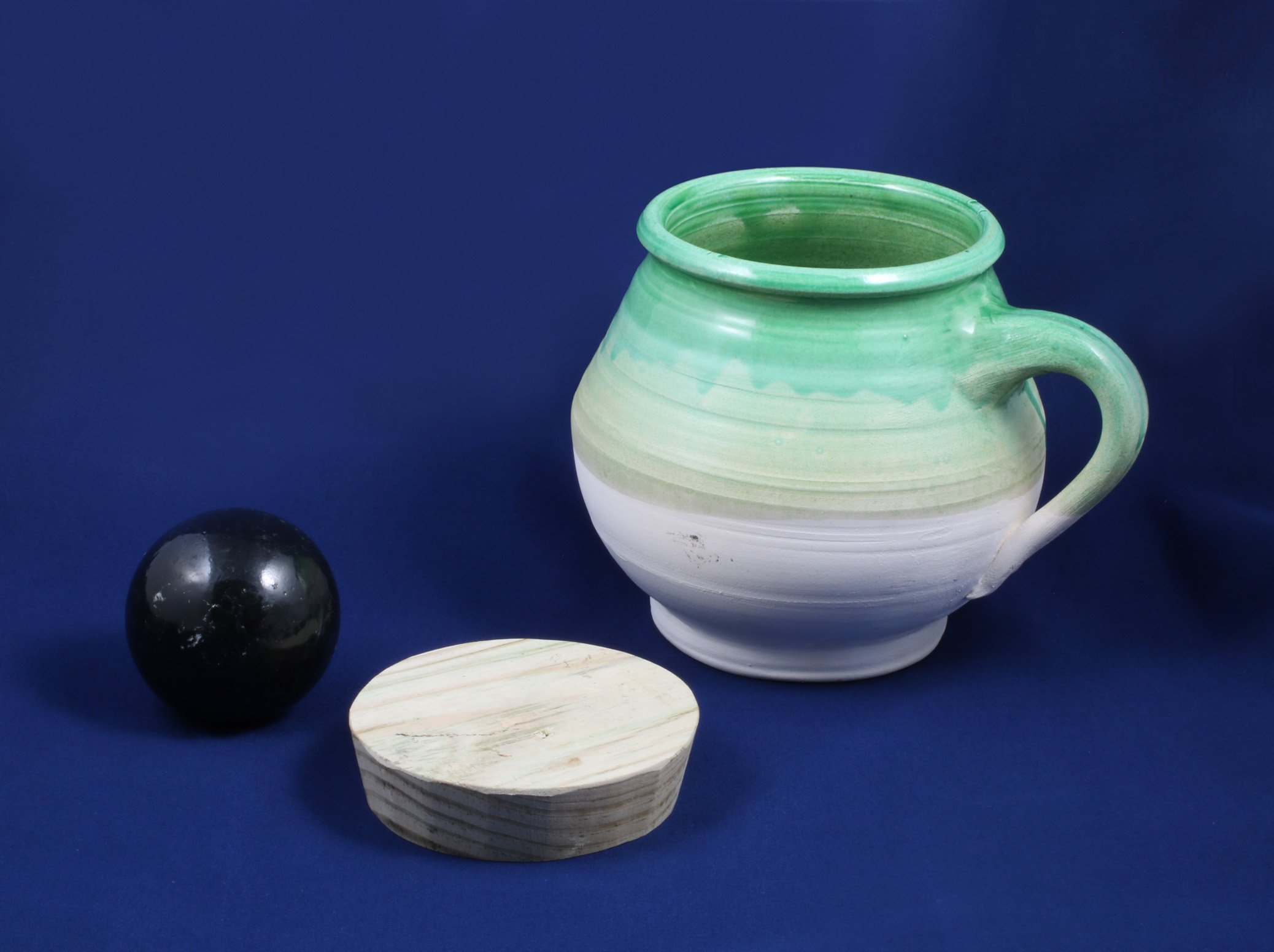
The ceramic debris from the experiments were, for the most part, small and sharp. Though they did not travel as fast as the iron debris, they would have peppered their victims with tiny sharp bits of pottery. These wounds would have been extremely painful and prone to infection, a killer in the seventeenth century.
At close range, then, the firepots were certainly deadly. At longer ranges, their effectiveness would have been mixed. If someone was unlucky enough to get hit by a big iron fragment, they would have sustained massive injury. This could happen at a great distance—researchers could hear iron fragments whizzing by at high speed over the protective berm dozens of meters from the explosion. These may well have been fatal to someone in their path. The firepots, then, would have had to be taken seriously by opposing forces, and would have compelled soldiers into cover at the very least. Survivors within a few meters of a firepot explosion would have been permanently scarred from powder tattooing and ceramic sherds.
La Belle’s firepots were devastating antipersonnel weapons that would have been useful for an assault on Spanish positions, whether presidios or silver mines. Thrown into buildings or over walls, they would have been even more effective because of the reflecting surfaces. Like the petards (explosive tools for breaching gates) also found aboard the ship, these weapons hint at the military ability of the La Salle expedition and the potential warlike intentions of the French crown that sent it.
Credits
Written by Penelope A. Ray with help from Amy Borgens, State Marine Archeologist, Texas Historical Commission. Penelope’s involvement with La Belle’s firepots began in 2010, while assisting the Texas Historical Commission and the Corpus Christi Museum of Science and History with the La Belle collections. Through this work, the author recognized a large gap in the archeological and historical understanding of firepots. With collaborator Julia Stryker, the author researched the firepots’ historical context, and subsequently led the experimental efforts to tell the story that documents, books, and artifacts could not. This was one part of the massive project to tell La Belle’s story, an effort that spanned dozens of authors and two decades, culminating with the 2017 publication of La Belle: The Archaeology of a Seventeenth-Century Vessel of New World Colonization. The La Belle firepots were conserved by the Conservation Research Laboratory, Texas A&M University.
Print Sources
Biringuccio, Vannoccio
1558 Pirotechnia. Curzio Troiano Navo, Venice.
Boteler, Nathaniel
1685 Six Dialogues about Sea-Services between an High-Admiral and a Captain at Sea. Moses Pitt, London.
Bruseth, James E., Amy A. Borgens, Bradford M. Jones and Eric D. Ray, editors.
2017 La Belle: The Archaeology of a Seventeenth-Century Vessel of New World Colonization. Texas A&M University Press, College Station.
de Gaya, Louis
1678 A Treatise of the Arms and Engines of War, Of Fire-Works, Ensigns, and Military Instruments, Both Ancient and Modern; With the Manner they are at Present Used, As Well in French Armies, As Amongst Other Nations. Robert Hartford, London.
Mallet, Alain Manesson
1684 Les Travaux de Mars, ou l’Art de la Guerre: Tome Troisiéme. Chez Denys Thierry, Paris.
Moretti, Tomaso
1683 A General Treatise of Artillery, or Great Ordnance. Sir Jonas Moore and Sir Abraham Dager, translators. Obadiah Blagrave, London.
Norton, Robert
1664 The Gunner: Shewing the Whole Practice of Artillery With All the Appurtenances Thereto Belonging. Humphrey Robinson, London.
Pawlet, Robert, Thomas Passinger, and Benjamin Hurlock
1672 The Compleat Gunner in Three Parts. Pawlet, Passinger and Hurlock, London.
Siemienowicz, Kazimierz
1650 Artis Magnæ Artilleræ. Johann Jansson, London.
Smith, John
1627 A Sea Grammar: With the Plaine Exposition of Smith’s Accidence for Young Sea-Men, Enlarged. John Haviland, London.
Online Sources
La Belle Shipwreck
TBH's La Belle Shipwreck exhibit contains eight sections and includes Kids' activities and curricula.
Firepot Experiments
View La Belle Firepot Project Tests on the Corpus Christi Museum of Science and History's YouTube channel.